Earlier this month, Gibson revealed the details of their 2018 model lineup, showcasing a number of tweaks to existing models and a few entirely new entries. In particular, the HP (or High Performance) version of the Les Paul Standard stood out, with its updated hardware and a smattering of new finish options like "Hot Pink Fade."
To some commenters, the flashy new finishes looked like something you'd see on MTV in the 1980s. That got us thinking about the guitars that Gibson actually produced and developed in that decade, which sent us, as you might imagine, down a rabbit hole of Reverb listings.
While Gibson did produce plenty of SGs and Les Pauls throughout the decade, they were also quite bold in introducing new models to capture the zeitgeist of the day. Take a look below for our ten picks of the historic brand's oddest efforts of the '80s.
Found on ReverbThe Corvus

The Corvus was a part of a series of guitars built to re-spark interest in the Gibson brand, which was experiencing a slump in popularity at the time. Supposedly, the guitar was intended to look like a crow in flight when viewed from the side (hence the name "Corvus," which is Latin for crow). Musicians at the time nicknamed it "the can opener" due to its unintended resemblance to a handheld can opener.
This model is a Corvus I, sporting only a single pickup. There were three models in the Corvus line: the I, II, and III. The II and III sported two humbuckers and three single-coils, respectively.
The Marauder
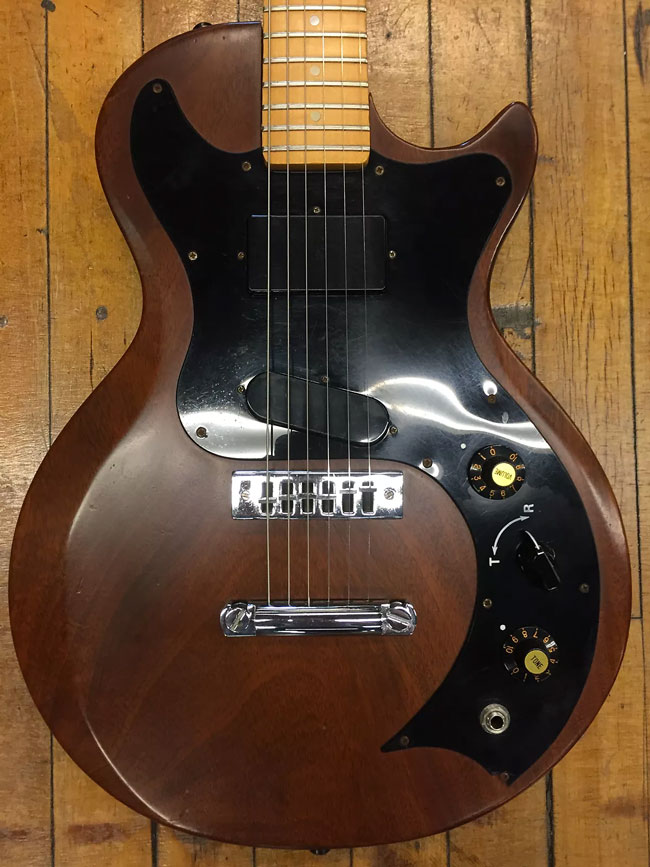
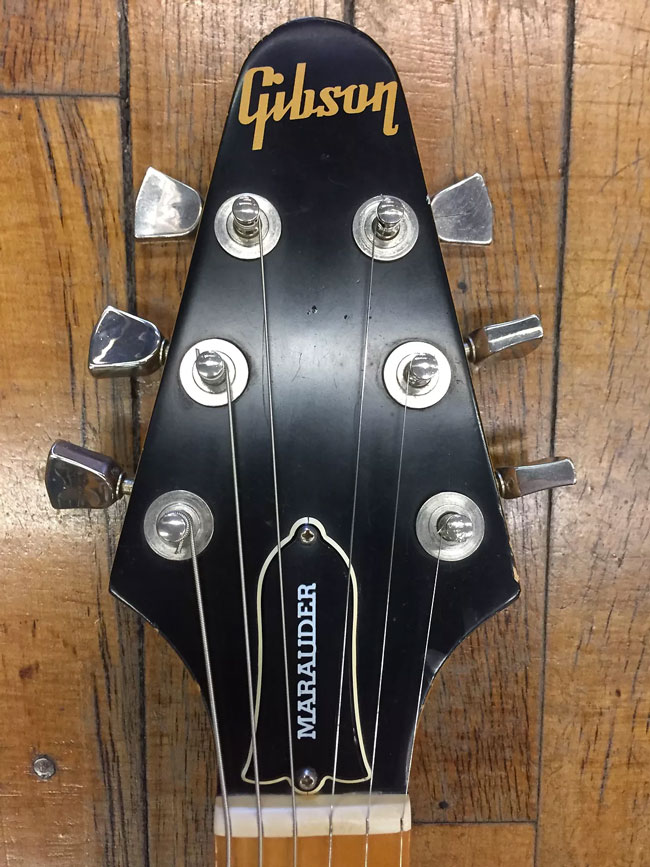
The Gibson Marauder is essentially a cross between a Les Paul and a Fender Telecaster, featuring pickups designed by Bill Lawrence. Though the guitar is relatively forgotten now, post-1976 models are actually really interesting instruments.
The guitars featured a standard humbucker in the neck and a slanted, thin humbucker in the bridge. It does look like a single-coil, but it isn’t. The guitars also featured a blend control, allowing you to blend the bridge and neck pickups. Because of this, the post-1976 Marauders actually had a pretty solid array of tones on tap.
This Marauder is a great example of the model and is in surprisingly good condition for its age.
The Sonex-180

The Sonex series was the successor to the Gibson Marauder, though they didn’t retain a lot of the features that made the Marauder interesting. The main appeal of these guitars is that they still have pickups designed by Bill Lawrence, which are thought to be among the best ever made.
Unlike the Marauder, the Sonex-180 wasn’t made from wood. The body was made from "Resonwood," which was sawdust and glue mixed into an epoxy. The Resonwood was then wrapped around a solid mahogany core that the neck was anchored to.
The featured model has somewhat of an SG flavor to it, sporting a candy apple red finish and a black pickguard. The electronics are also all original.
The Moderne

The Gibson Moderne has an interesting history that is well-outlined in our piece The Legend of the Gibson Moderne.
A quick summary for those of you who don’t feel like reading through the article (though you really should, it’s a good read) is that the model only existed as a prototype for about 30 years due to the lukewarm reception it received at its first NAMM showing. Then, in the 1980s, it was sold for a short period of time and has recently been reintroduced.
The guitar is the missing link between the Flying V and the Explorer, being a middle ground between the two. The guitar didn’t fare extremely well during its first reissue, and because of this, the 1980s models are relatively rare and somewhat like collector’s items.
The featured model comes with a natural Korina finish, gold hardware, and the original hardshell case.
The ES-357
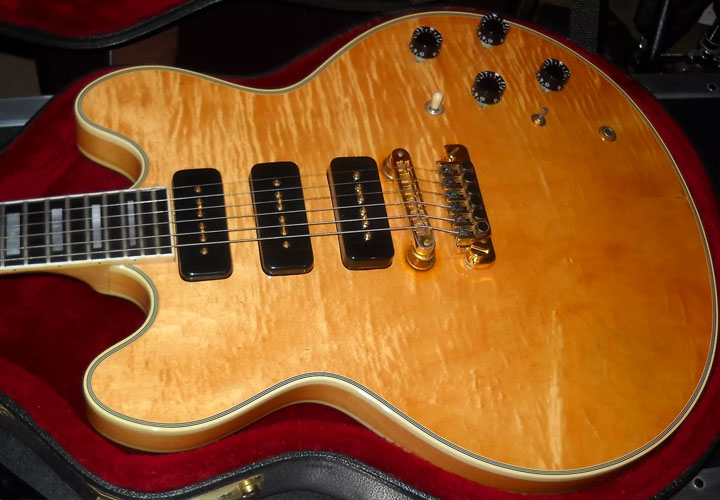
The ES-357 is the brainchild of former Tonight Show guitarist and the current Gibson Product Specialist, Mick Holder. Holder, having recently been hired onto the Tonight Show, was on the hunt for Gibson ES-335 that didn’t suffer from the feedback issues that plague the model.
Hence, the ES-357 was born. The guitar abandoned the ES-335’s trademark F-holes, and featured a brass block sunk into the body’s sound post in an attempt to increase sustain and brightness. Holder’s model came with humbucking pickups, but the production model was equipped with P90s instead.
This model — while not true to the model used by Holder — is a perfect example of Gibson at their best. The guitar is extravagantly appointed, with the standout feature being the guitar’s blonde flamed-maple finish.
The Challenger III

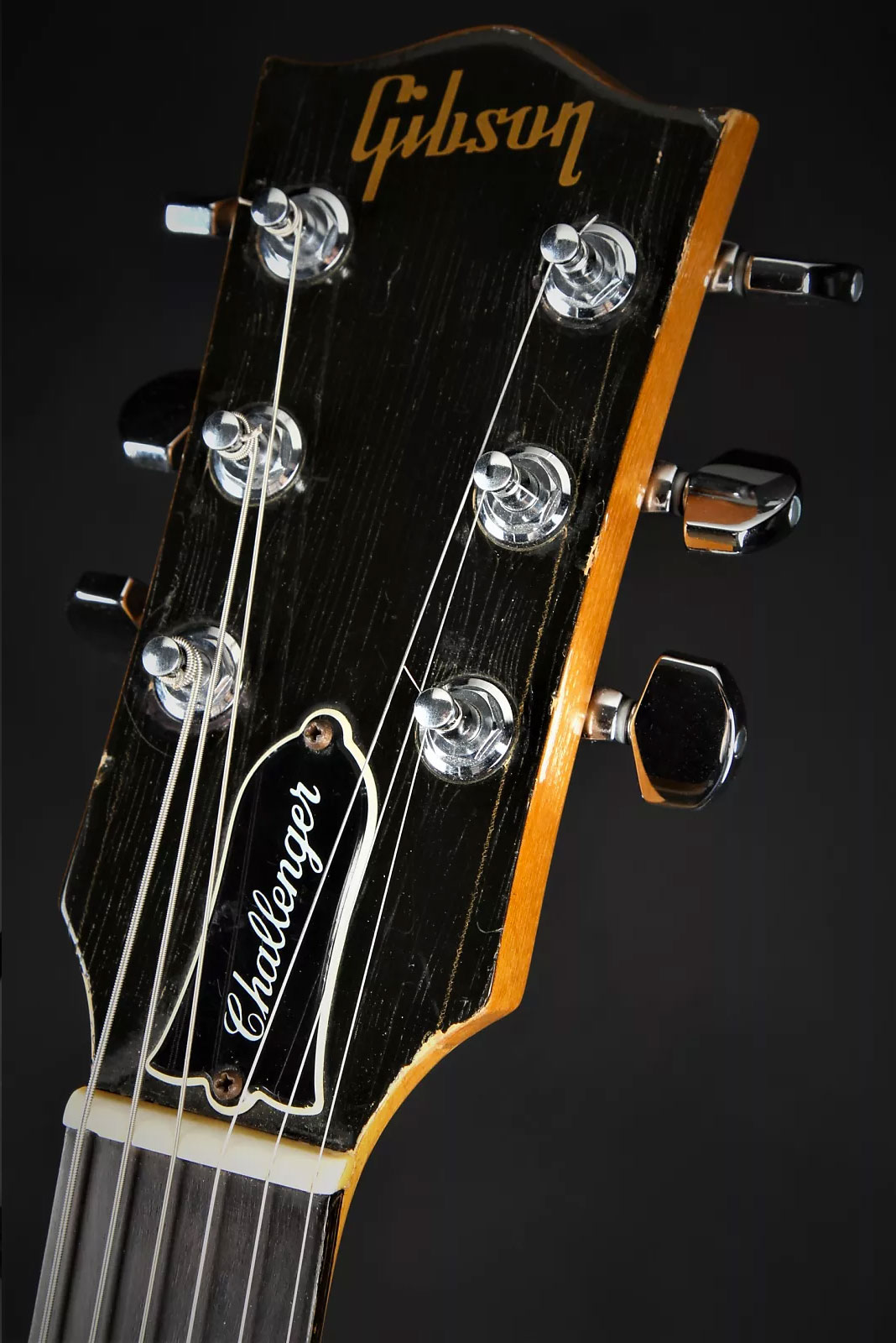
The funny thing about the Challenger is that it, unlike a lot of the guitars on this list, wasn’t designed with a grand vision in mind. It was just produced to use up the leftover parts from Gibson’s previous experiments with single-coil pickups (the Corvus especially). Because of this, it was actually only made for one year.
Despite its rarity, the guitar is still really affordable for a vintage USA-made instrument. While not as interesting as the Marauder, for the money, it’s a steal. It comes with Bill Lawrence-designed pickups, and is considered to be a better instrument overall than those in the Sonex series (and on par with the Marauder).
This model in particular is in player’s condition. The finish, a natural coat over what appears to be mahogany, has a few scratches and dings. There’s also a repaired crack on the back of the instrument, though it’s stated in the listing that the guitar is currently structurally stable.
The "Map"
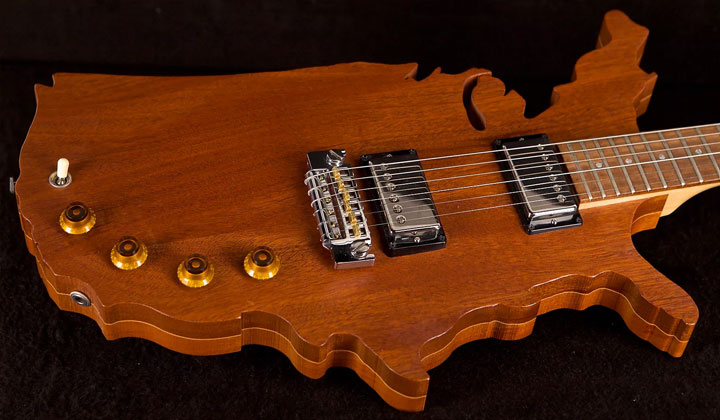
Map guitars are always a bit of an eye-roller. They’re impractical and a bit gaudy, and the Gibson Map isn’t an exception. A fun fact about the model is that they were actually produced by Epiphone first. The models were well received, so Gibson decided to produce an up-scale model with the parent company’s branding.
Though a novelty guitar at its core, the Map was pretty well outfitted. It came with the build quality you’d expect from an American-made instrument and the moderate output pickups Gibson was using at the time.
Victory MVII
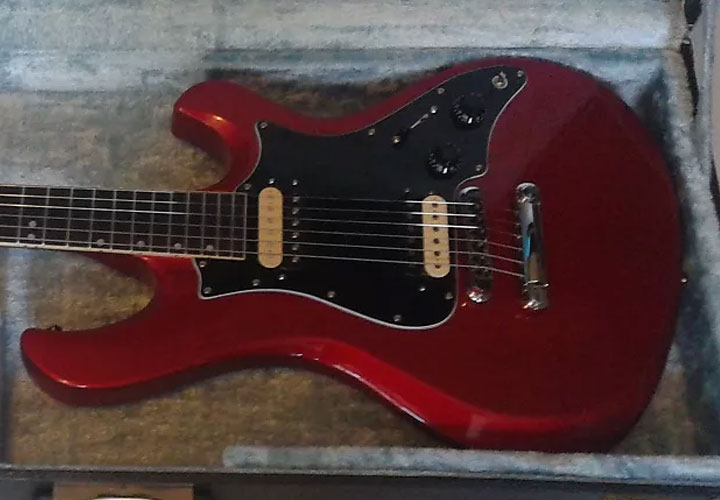
Like the Marauder and the Sonex-180, the Gibson Victory MVII was designed to appeal to hard rock and metal players. It was Gibson’s first (and only) Superstrat. And for a company known for guitars like the Les Paul and ES-335, you’d be surprised just how good of a job Gibson did hitting that niche.
The MVII features two humbucking pickups, a master volume control, a master tone control, a three-position switch, and a master coil-split control. Coil-split humbuckers don’t sound like single-coils, but they’re a close enough approximation that this guitar can pull off some surprisingly lifelike Strat tones.
Editor's Note: As has been pointed out in the comments, the Victory MVII was not Gibson's only Superstrat. They also made the US-1, U2, Q-3000, and WRC models in this era which all qualify.
Firebrand 335-S

Gibson’s Firebrand line of instruments was a run of scaled-back reinterpretations of their classic designs, built with the intention of providing musicians with a genuine Gibson that was still affordable… and they kind of flopped.
The 335-S is a solidbody ES-335, sporting almost no resemblance to its inspiration. However, on its own merits, it isn’t really a terrible instrument. The pickups used in the guitar, Gibson’s Super Humbucking Pickups, actually have a minor following among classic rock players. And for right around $1,000 you could definitely do worse.
ES-369
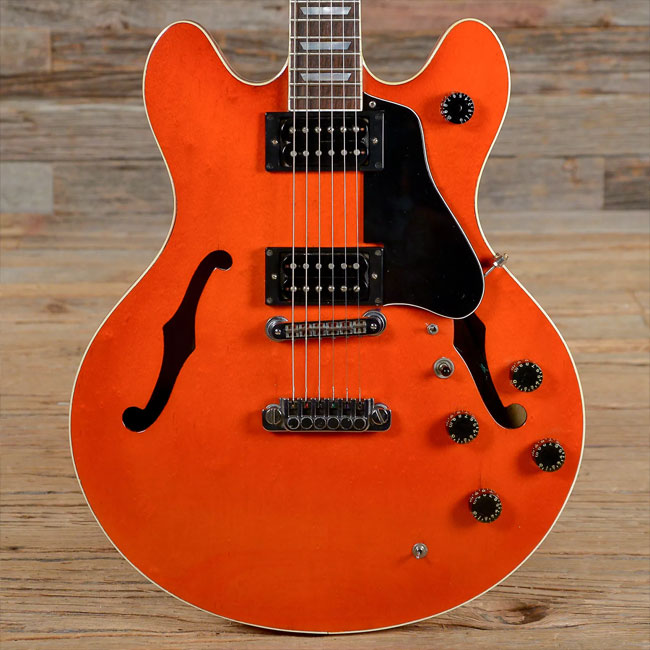
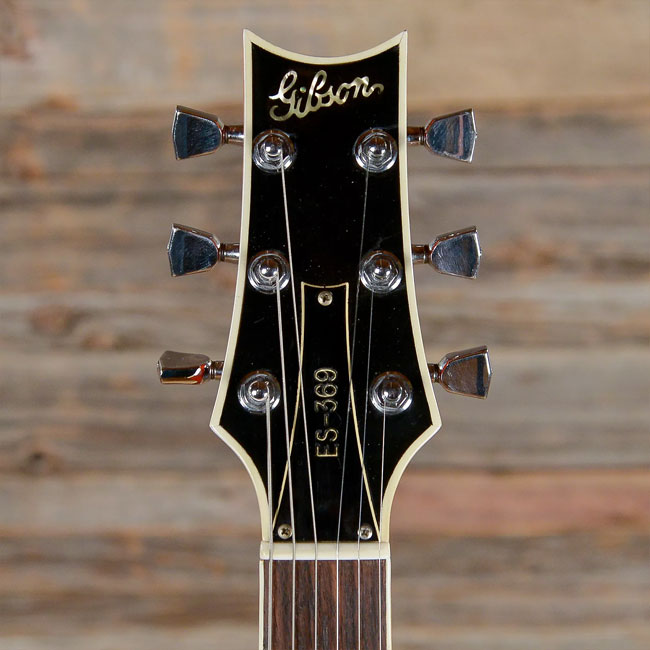
The Gibson ES-369 is an odd duck, not because it’s really that far of a departure from ES-335 (excluding that awful headstock), but more so because it just seems unnecessary. The only difference it had from similarly styled guitars of the decade is its headstock, which lends credence to the theory that it was made from parts leftover from other Gibson ventures.
While the headstock isn’t the prettiest around, supposedly it actually helps to alleviate the tuning issues that the Gibson-style headstock sometimes suffer from.
The featured model sports after-market pickups, though their model wasn’t stated in the product description. The original pickups for this model were reportedly Gibson’s Dirty Fingers, which are a bit hotter than your standard issue humbucker.
